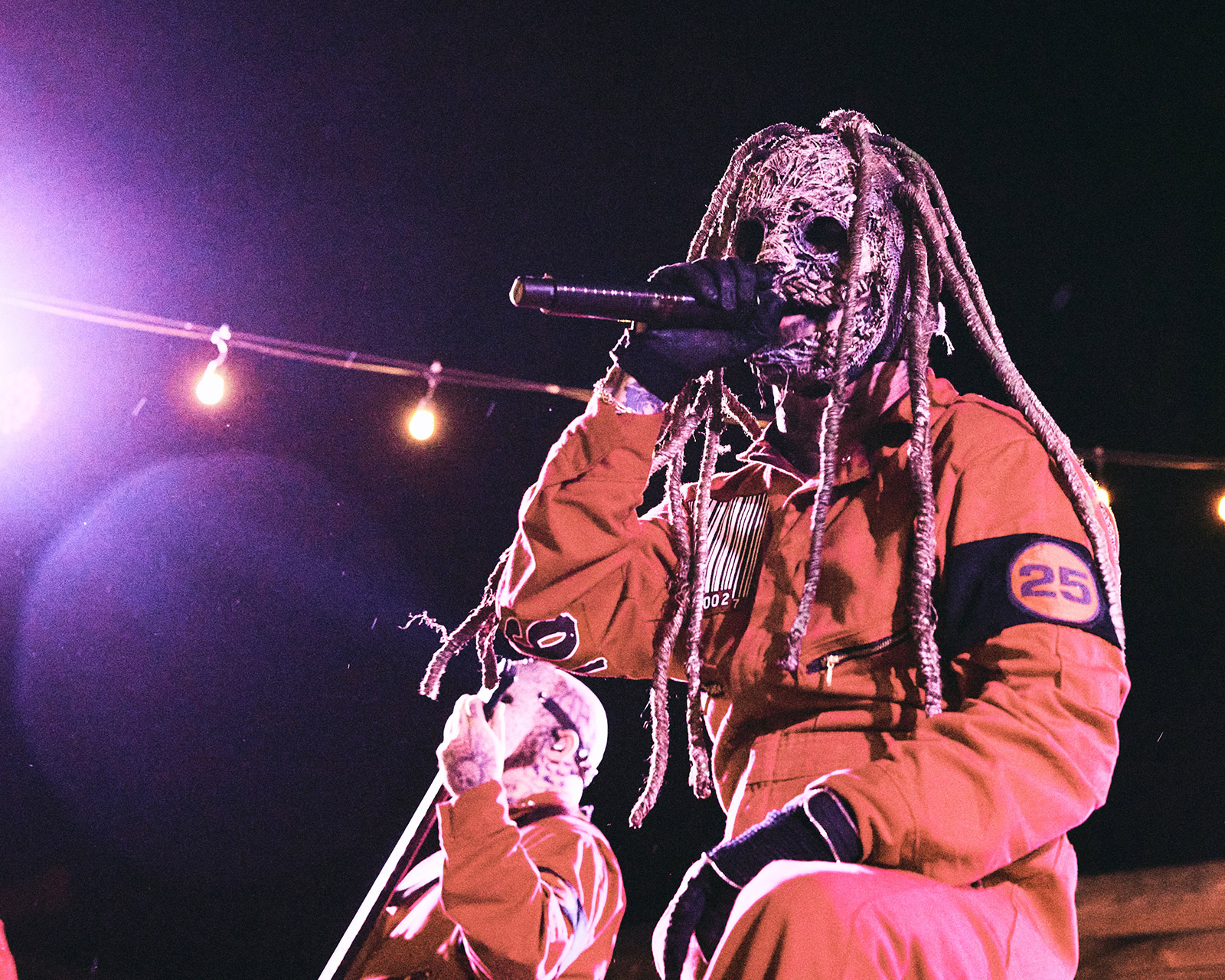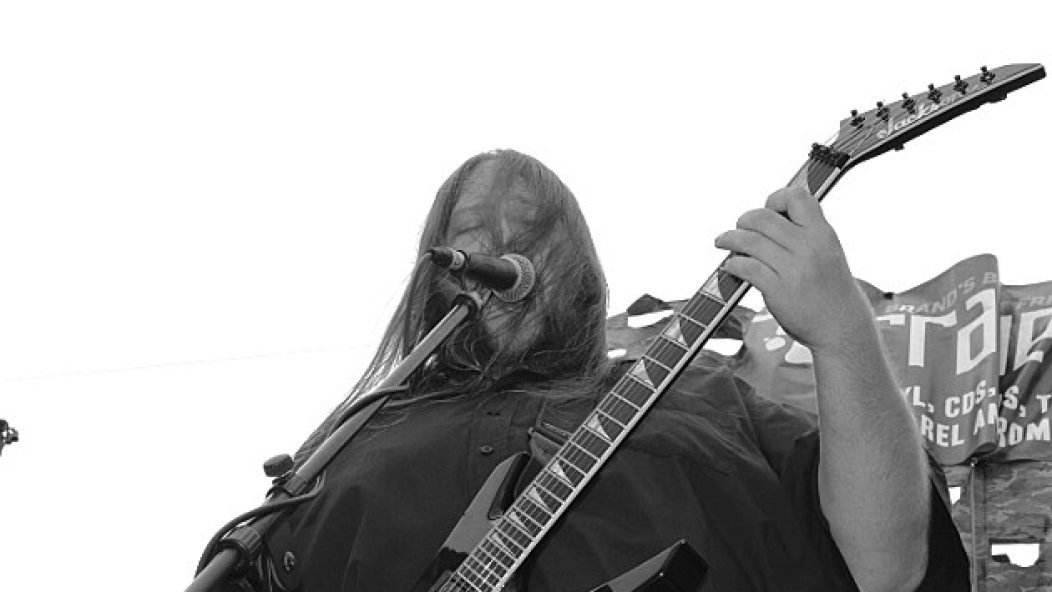
Hoverfest 2015
…
2015 might have marked the end, for now, of the large package metal tour. While overlong parking lot bonanzas are one of the only ways young metalheads in smaller markets and middle America get to see concerts, I can’t say I’m sorry to see them go. In many places there’s a plethora of smaller, more local festivals that provide a better experience often with better music. Maybe this is the end of a musical Cretaceous period, and smaller, more adaptable variants are beginning to outpace the large, specialized killing machines that preceded them..
Hoverfest takes place in an alley in Portland, Oregon rather than a parking lot, but otherwise serves as the perfect example of an: the independent answer to the big package tour, in this case one that celebrates Hovercraft amplifiers. We covered the first Hoverfest last year[http://www.invisibleoranges.com/2014/09/show-review-hoverfest/], so I made a day trip to Portland in order to spend some face time with staff writer Greg Majewski and see what had changed in a year.
In brief: not much. The stage set-up looked more-or-less identical to the one from Matt Schmahl’s coverage last year. Every concertgoer I chatted with had gone the previous year, had a great time, and returned again.
…
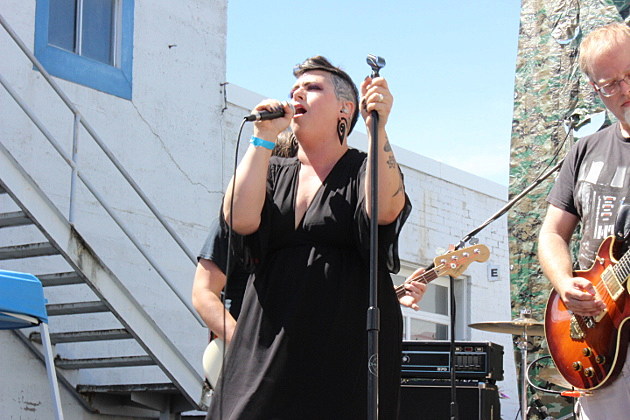
Photo by Joseph Schafer
…
I arrived partway into the opening set by Holy Grove, a holdover from last year,, and so didn’t get an opportunity to get too much of a feel for the group. My impression is: the Pacific Northwest has a strong contingent of fairly clean kinda-doom-kinda-rock bands strongly indebted to the British folk rock tradition and mid-to-late Ozzy Sabbath. Holy Grove are a prime example of this sound. They played with enthusiasm and sounded well-rehearsed. Next time they play Seattle I’ll try to get a more refined opinion.
…
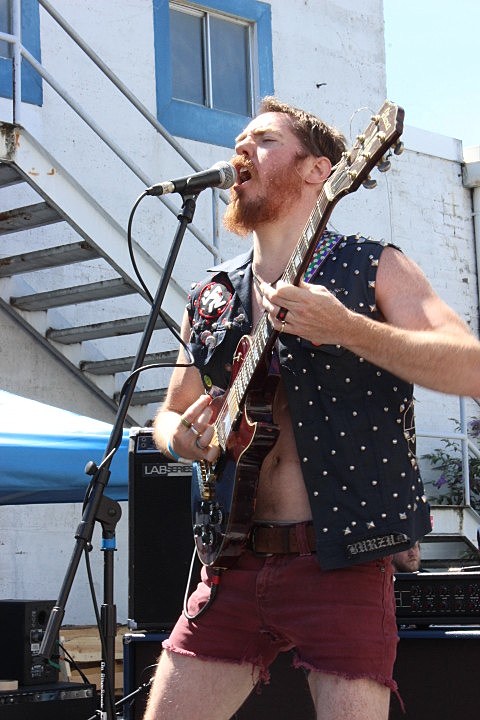
Photo by Joseph Schafer
…

Photo by Joseph Schafer
…
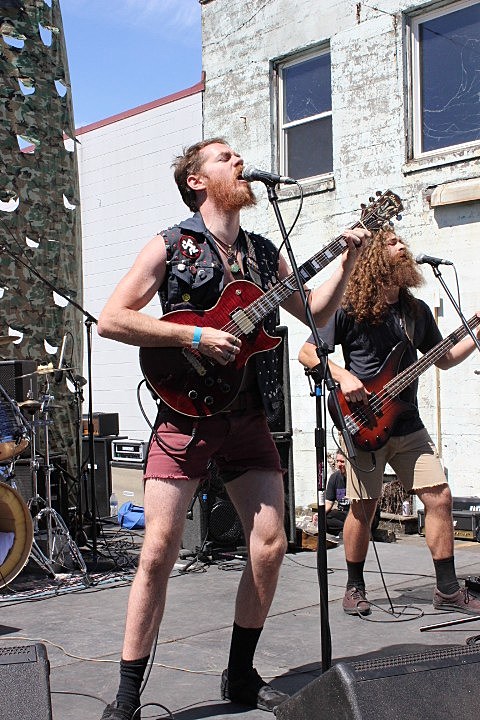
Photo by Joseph Schafer
…
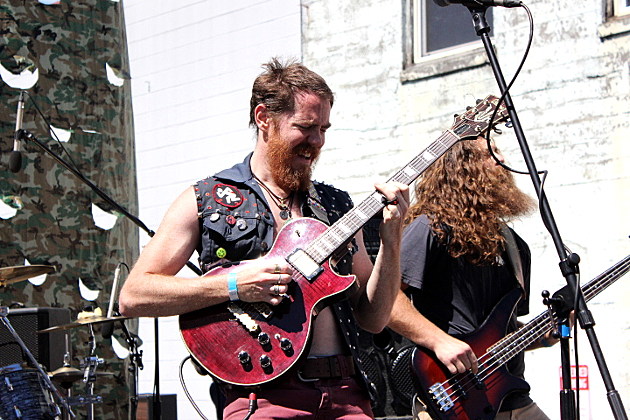
Photo by Joseph Schafer
…
Next, in a drastic change of pace, came Zirakzigil, a band that Majewski first brought to my attention on his 2013 year end list[http://www.invisibleoranges.com/2013/12/greg-majewskis-best-of-2013/]. On record, the band drives two points home: they really know how to play their instruments, but only for extended periods of time. Their shortest songs clock in around 15 minutes, but live that time slips away from you like a rabbit in the backyard. Tape hiss and noise play a big role in the band’s albums, but the clarity of the live setting brought some intimate details in their writing to my attention. Charlie Dudley performs with animation and enthusiasm that is likewise tough to gauge on their records. the band has a new album, Worldbuilder, out as of April. Listen to it, and if you get the chance, see them live. It was a treat.
…
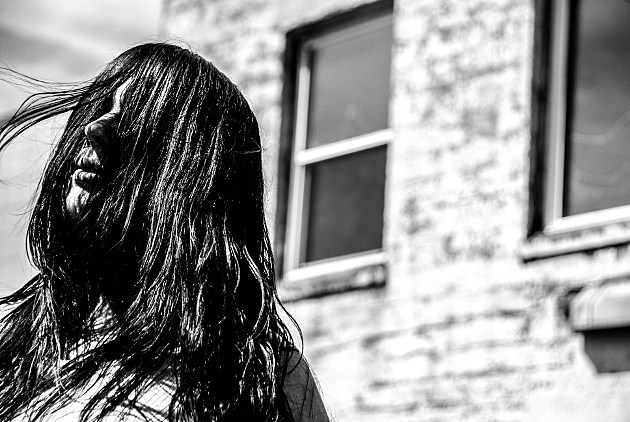
Photo by Aaron Sharpsteen
…
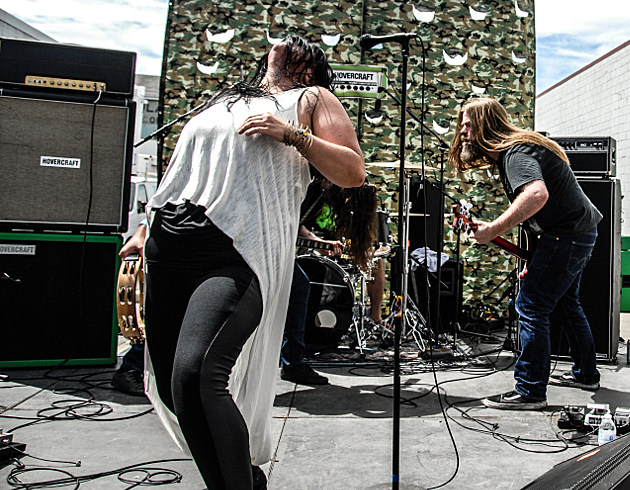
Photo by Aaron Sharpsteen
…
Lunch demands and a short business meeting kept me from seeing most of Mane of the Cur‘s set. Next time.
…
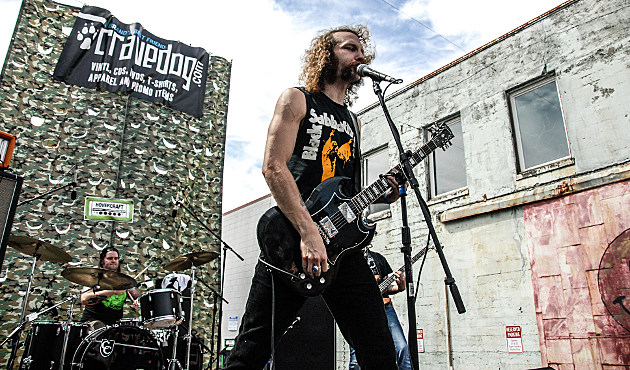
Photo by Aaron Sharpsteen
…
Sons of Huns more than almost any other band on the bill made good use of the Hovercraft amplifier backline provided for the festival. This kind of high-energy metallic rock requires volume and distortion in copious amounts. Like lemonade on a summer afternoon, it calls for a whole pitcher, not just a paper cup. I’ve heard their albums before, but the contained format waters down their mix of Monster Magnet and Turbonegro into something a bit too safe.
…
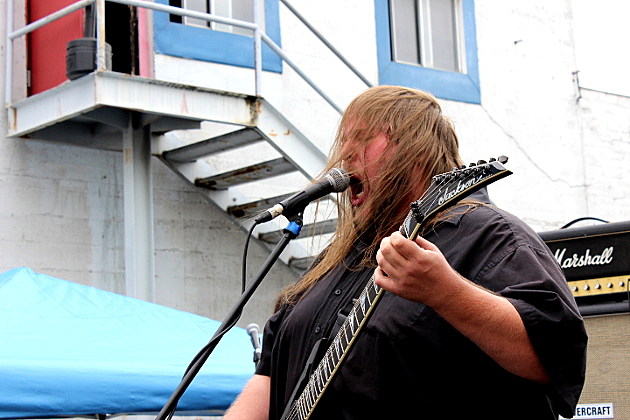
Photo by Joseph Schafer
…
Then came my third Lord Dying set in the course of a year. Each time I see the group I’m more and more impressed by their live show and consequently more flabbergasted at how amazing it will be when their compositions finally pop on record. Lord Dying’s ability to string together chains of massive riffs into cohesive five minute suites recalls Ride the Lighting, but Erik Olson’s vocals fall somewhere between John Tardy and Matt Pike. I can see why the band worked with Joel Grind on their new record, Poison Alters, but somewhere toward the end of their set I imagined what they might sound like with Erik Rutan behind the boards.
…
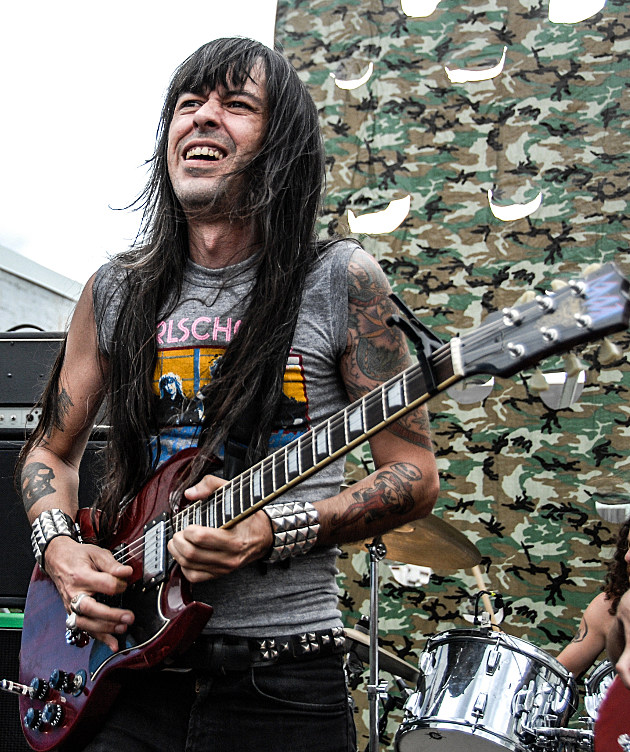
Photo by Aaron Sharpsteen
…
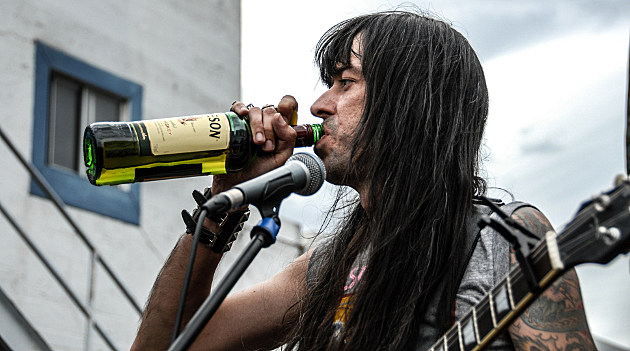
Photo by Aaron Sharpsteen
…
Danava threw the biggest curveball and put on perhaps the best—or at least most energetic— set of the evening. Their set charged through what seemed like an endless torrent of late 70’s guitar licks delivered at high speed, recalling both UFO’s Strangers in the Night and Diamond Head’s Lightning to the Nations. High praise? Sure, but I found their performance compelling, especially considering that singer and guitarist Gregory Meleney put away what looked like an entire fifth of Jameson Irish whisky during the course of the set without any negative impact on his guitar playing. I remember some readers commenting about loving Christian Mistress because that band recalls the Scorpions—I encourage those readers to sample Danava.
…
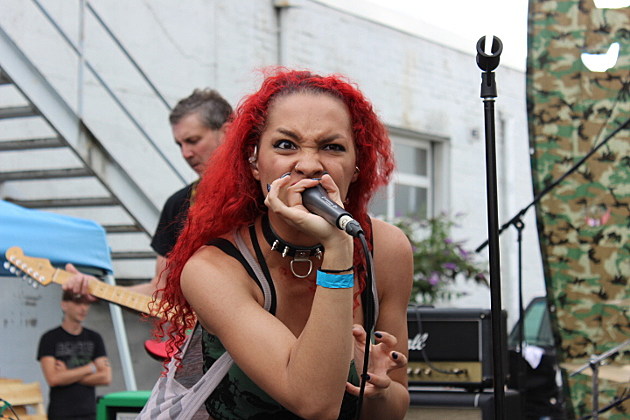
Photo by Joseph Schafer
…
I found myself a little anxious going into my first Witch Mountain set. There was a period of time right after Cauldron of the Wild hit shelves in 2013 where it looked as though Witch Mountain would become a large enough touring act to hit smaller markets and bring the coastal doom sound to the greater US, and world at large, in a serious fashion. For whatever reason that did not happen and the band’s follow-up, Mobile of Angels, didn’t strike a chord with me. shortly thereafter the band’s singer, Uta Plotkin, left. Her vocals had a major part in the band’s appeal. All of this is to say that I was kind-of primed for disappointment, since my first Witch Mountain show featured new singer Kayla Dixon.
…
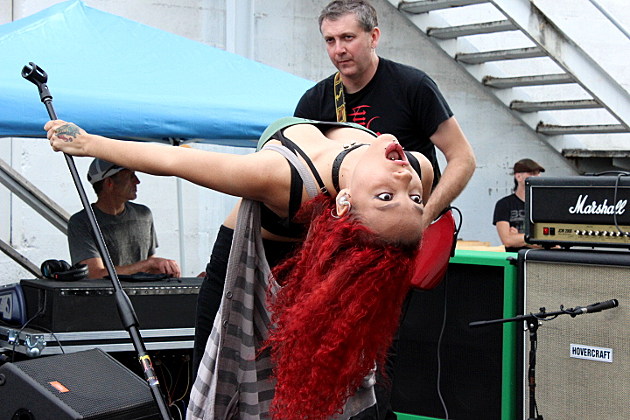
Photo by Joseph Schafer
…
So, Witch Mountain performed well. They sounded tight and probably drew the most rich, varied and interesting sounds out of the amplifiers of any band that day. Dixon is an engaging frontwoman; she not only hit all of Plotkin’s hard-to-reach notes, but also used her background in dance to contort her body in-between-bars. What’s more, she’s got a great extreme metal scream and peppered it into her performance, something Plotkin did not do (at least on record).
…

Photo by Joseph Schafer
…
Here’s the rub: Dixon is a very different singer than Plotkin. Witch Mountain’s older material, at least Cauldron and South of Salem, are rooted in the melancholy and sonic palate of electric blues. Vocal fry and a relatively confrontational stage demeanor don’t dovetail well with that material, so while Dixon hit all the notes in “Shelter,” with aplomb, I would have preferred that the band played all new material that played to their talented new vocalist’s talents. Dixon is young—not even drinking age—and still finding herself. Hopefully she will do so in a talented group like Witch Mountain. I’m sure the band can make a record as good as Cauldron with Dixon, but in the meantime I’d rather they left the older material alone. Such is the bias that comes with nostalgia.
…

Photo by Joseph Schafer
…
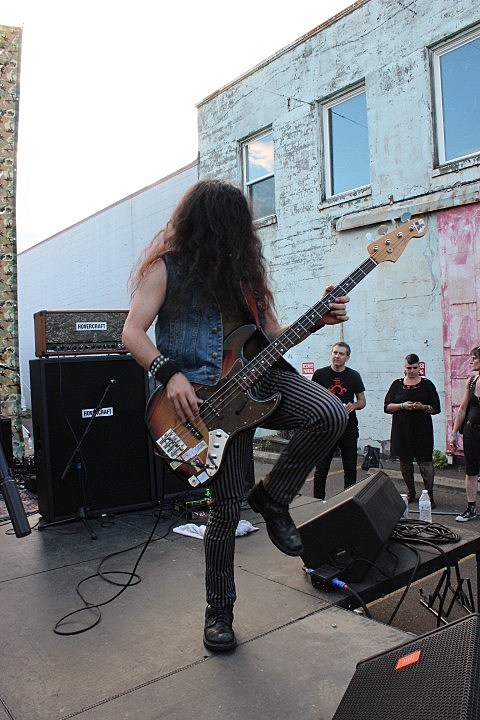
Photo by Joseph Schafer
…
Nostalgia, while we’re on the topic, fueled Slough Feg’s headlining set. The band performed as a three-piece, which meant no material from the past 15 years. fine by me, My favorite Slough Feg material comes from the group’s time as a three piece. Seeing “Warriors Dawn” live in particular was a highlight. Singer and Guitarist Mike Scalzi had some trouble with the Hovercraft amplifier—his celtic melodies and trebly guitar tone weren’t particularly well suited to the Hovercraft’s bass-heavy output, but he kept the riffs recognizable, if a bit fuzzier than on-record. Scalzi’s an entertaining performer, prone to crack jokes (“I have a fear of widths, not heights—I had a panic attack in Ohio”) between songs as well as put his hat on the heads of women in the audience. Peculiar, but then again so is Slough Feg.
…
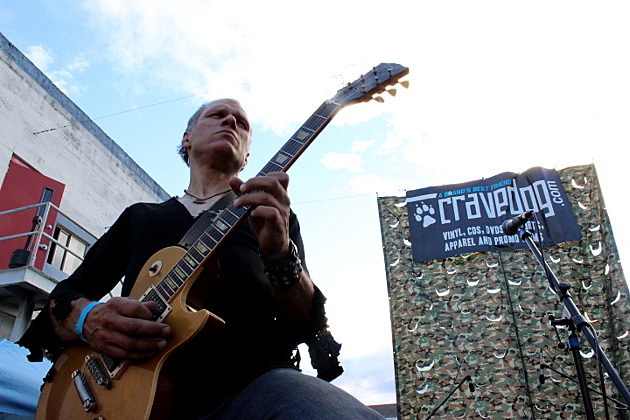
Photo by Joseph Schafer
…

Photo by Joseph Schafer
…
The untouchable highlight of the fest came when Scalzi put his guitar down while Rob Wrong from Witch Mountain took up axe duties for a rendition of Judas Priest’s “Love Bites.” Again, nostalgia. slough Feg could have kept playing for hours, judging by Scalzi’s bottomless well of energy and dad jokes, but called their set while the sun set, leaving the audience plenty of time to go home, recuperate and attend another concert—which I did. Majewski, a few friends and I went to Bunk Bar for cheap beer, Cuban sandwiches, and further riffs courtesy of Ovvl and R.I.P., both of which sounded like nostalgic throwbacks to the high 70’s hard rock of Vanilla Fudge and pre-sheen ZZ Top.
We wound up staying while the bar closed down, headbanging and air-guitaring while the venue ushered people with Black Sabbath’s self-titled album, a worthy cap to a solid day of nostalgic riffs and amplifier abuse.
. . .
This article has been edited to more correctly attribute band photographs
. . .







